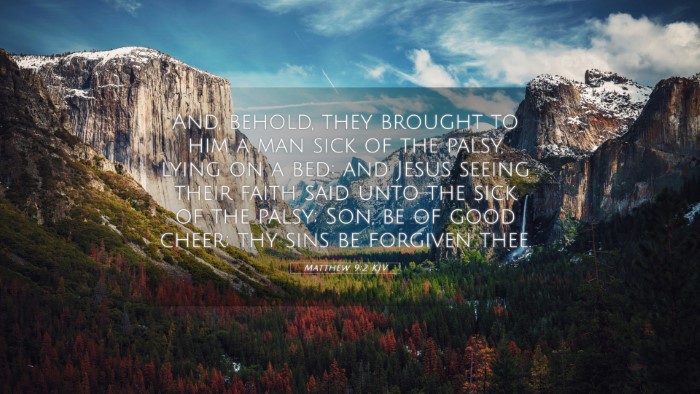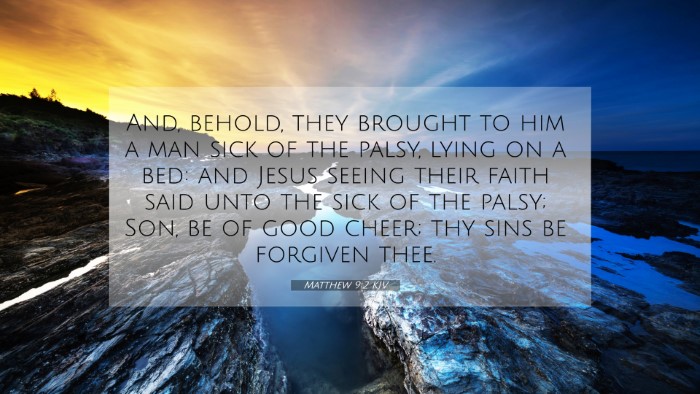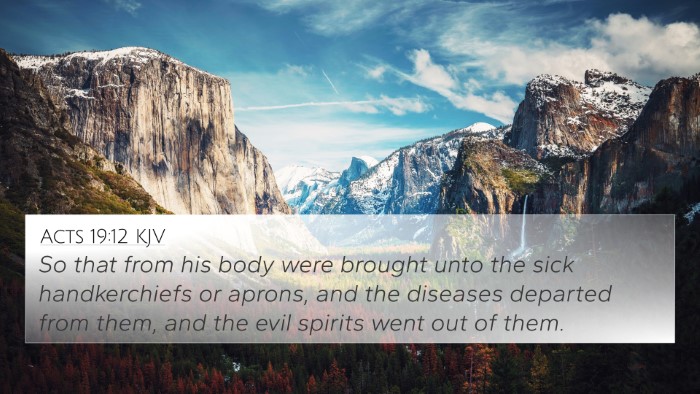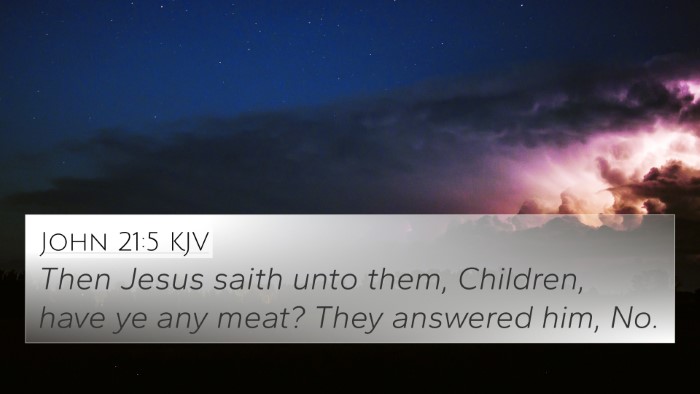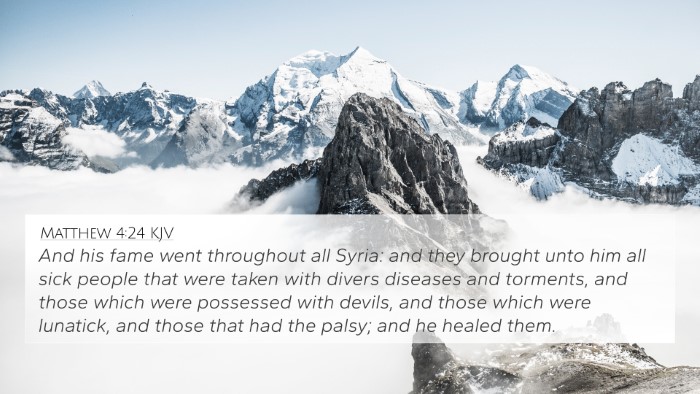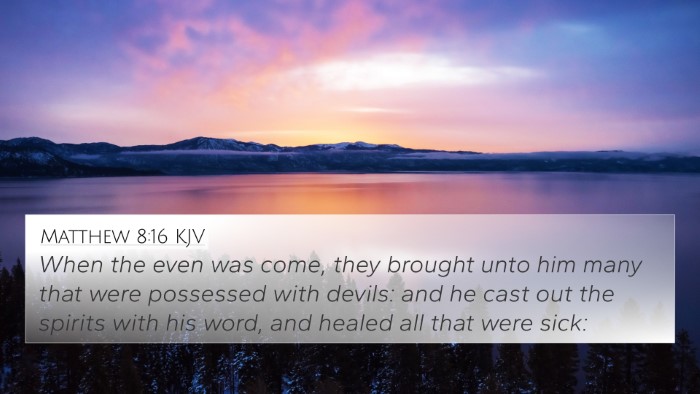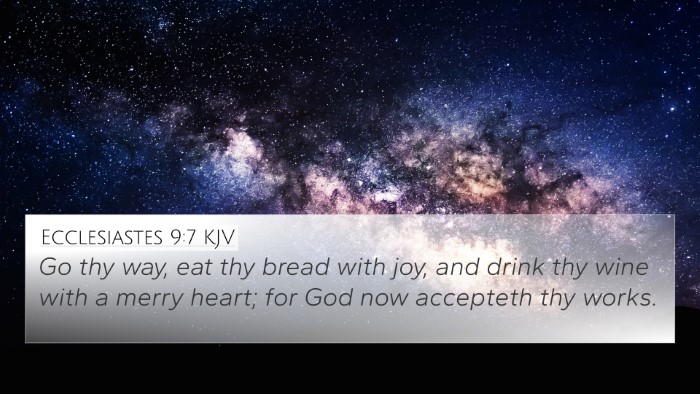Understanding Matthew 9:2
Matthew 9:2 states: "And, behold, they brought to him a man sick of the palsy, lying on a bed: and Jesus seeing their faith said unto the sick of the palsy; Son, be of good cheer; thy sins be forgiven thee."
This verse carries profound implications regarding faith, healing, and forgiveness, encapsulating the remarkable interactions between Jesus and those seeking His help. Below, we explore the meaning of this verse through the lens of different public domain commentaries.
Verse Meaning Summary
Matthew Henry notes that the scene depicts a demonstration of faith, whereby friends of the paralytic actively seek out Jesus, showing both their belief in His ability to heal and their compassion for the afflicted man. This act of bringing the sick to Christ represents the collaborative nature of faith—often, help comes from the community.
Albert Barnes emphasizes the significance of Jesus’ words: “Son, be of good cheer.” This not only addresses the man's physical ailment but also alleviates his spiritual burden. Barnes highlights that Jesus prioritizes spiritual healing—granting forgiveness of sins—before addressing physical needs, showcasing the holistic approach Jesus takes towards healing.
Adam Clarke adds a layer of interpretation concerning the sickness of the palsy. He discusses how the paralytic’s physical condition serves as a metaphor for spiritual paralysis—a state where sin can debilitate a person's ability to lead a fulfilling spiritual life. Clarke points out that Jesus sees the faith of those who brought him and responds by offering forgiveness, signifying that faith is key in the process of divine restoration.
Thematic Connections
This verse not only serves to illustrate the interaction of faith and healing but deeply connects to various biblical themes of forgiveness and compassion. Here are important connections to consider:
- Faith and Healing: The act of bringing the sick man to Jesus highlights the interplay of communal faith and divine intervention.
- Forgiveness of Sins: Jesus’ declaration points to the foundational Christian belief that forgiveness precedes healing, underscoring the necessity of spiritual wellness.
- Community Support: The friends’ determination reflects the significance of community in the spiritual journey—illustrating that we are often called to help bring others to Christ.
- Holistic Restoration: The balance between physical and spiritual needs is a recurring biblical theme, reinforcing the idea that God addresses every aspect of our being.
Cross-References for Matthew 9:2
The following Bible verses relate to the themes found in Matthew 9:2:
- Mark 2:1-12: This passage recounts the same event, showing the persistent faith of the friends who lowered the paralytic through the roof.
- Luke 5:18-20: Another account of the healing, emphasizing the action of the friends and the power of Jesus’ forgiveness.
- John 5:14: Illustrates the relationship between sin and sickness, affirming the need for spiritual healing as well.
- James 5:15: Discusses the prayer of faith that brings healing, embedding the concept of faith in the context of restoring health.
- Acts 3:6-8: Demonstrates healing through faith, echoing the dynamic seen in Matthew 9:2.
- Matthew 8:16: Shows Jesus healing the sick & casting out demons, highlighting His authority over both physical and spiritual ailments.
- Isaiah 53:5: Prophetic mention of the suffering servant, alluding to the ultimate healing through Christ’s sacrifice.
- 1 Peter 2:24: References Jesus bearing our sins and the healing provided through His wounds.
- Romans 10:17: Stresses that faith comes by hearing, linking the importance of knowledge about Jesus to the faith shown by the paralytic's friends.
- Luke 19:10: Jesus came to seek and save the lost, aligning with the theme of His ministry as a healer and redeemer.
Comparative Analysis
Cross-referencing these passages allows for a deeper understanding of the interconnectedness of scripture. For instance, the story in Mark 2 not only amplifies the significance of faith but also adds the element of community involvement in healing. Similarly, connections between sin and physical ailments in John 5 encourage a holistic view of health, aligning perfectly with Jesus' actions in Matthew 9:2.
Cross-Referencing Tools and Methods
To better explore the connections between Bible verses, one may utilize:
- Bible Concordance: A tool that helps identify where particular words or phrases appear throughout the scriptures.
- Cross-Reference Bible Study: Encourages thorough examination of verses that correlate with each other thematically and contextually.
- Bible Reference Resources: Various study Bibles and online resources that provide insights and cross-references for deeper understanding.
- Bible Chain References: A method of following biblical themes by linking verses that resonate with similar ideas and concepts.
Conclusion
Matthew 9:2 serves as a powerful reminder of the dual aspects of Jesus’ mission: healing and forgiveness. By studying this verse and its associated cross-references, believers can appreciate the depth of God's provision through Jesus Christ, learning that faith not only can lead to miraculous healing but also ultimate spiritual restoration.
As one dives into this verse and its connections, it's evident how biblical texts engage in an inter-Biblical dialogue—shedding light on the themes that resonate throughout the scriptures. Tools for Bible cross-referencing enrich our study, revealing the profound linkages that exist, making our understanding of scripture more comprehensive and interconnected.

